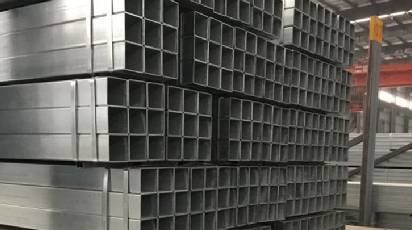Square Galvanized Steel Pipe manufacturer shares this article for you
There are two main factors to consider when selecting the steel pipe quenching method. First, the cooling speed of the steel pipe during quenching can ensure the expected quenching structure; secondly, the steel pipe is cooled evenly during quenching, and the deformation should be small to ensure that the subsequent process can be carried out normally.
At present, most of the steel tube heat treatment uses water as the quenching agent. This is because, in the quenching medium, water is the most economical and safe, and has no pollution to the environment. However, due to the rapid cooling rate of water, the steel pipe is prone to deformation during quenching, and when the deformation of the steel pipe is severe, it is scrapped due to the inability to perform the next process. Therefore, when selecting the quenching method, it is necessary to not only achieve the quenching requirements of the steel pipe but also control the deformation within the allowable range.

Square Galvanized Steel Pipe
According to the above analysis, first of all, it is most ideal to quench the steel pipe in a rotating manner, and at the same time to perform internal and external cooling. For internal cooling, the water is sprayed into the pipe by the nozzle, and the water flow rate is preferably not less than 10m/s. External cooling can be sprayed or immersed in the quenching tank, but there must also be a stirring nozzle in the quenching tank. In short, the quenching of the steel pipe should be the cooling capacity to meet the requirements, and the cooling should be as uniform as possible. This is the guiding ideology for choosing the quenching method.
The ideal quenching agent is to cool faster in the high-temperature region to avoid decomposition of austenite and improve the hardenability of the steel; in the low-temperature region, the cooling rate is slower to reduce the structural stress and reduce the martensite transformation Deformed or cracked. The ideal quenching agent does not exist, but these two factors should be considered when selecting the quenching agent.
The choice of quenching agent should be considered according to various factors such as the type of steel pipe, technical requirements, and steel composition. Taking petroleum pipes as an example, the heat treatment of high steel grade (strength) steel pipes uses a quenching and tempering process, that is, quenching and high-temperature tempering. Most steel types are medium carbon alloy structural steel with low carbon content. The effective thickness (wall thickness) of the steel pipe is basically the same. The difference in stress distribution everywhere during quenching is small, and the risk of cracking is relatively low, so, You can prefer to use water as a quenching agent.
The advantage of water is that the cooling speed is fast, which can improve the hardenability of the steel, reduce the alloy content on the steel used, and reduce the production cost. In addition, water is used as a quenching agent, which is safe and economical in production. Also due to the rapid cooling rate of water, the deformation of the steel pipe is large, and in the case of some defects on the surface of the steel pipe, it will expand into defects and be scrapped during quenching.
If the square galvanized steel pipe has a high carbon content, in order to reduce deformation or cracking during quenching, rapid quenching oil or water-based quenching fluid with a slower cooling rate should be used as the quenching agent.
